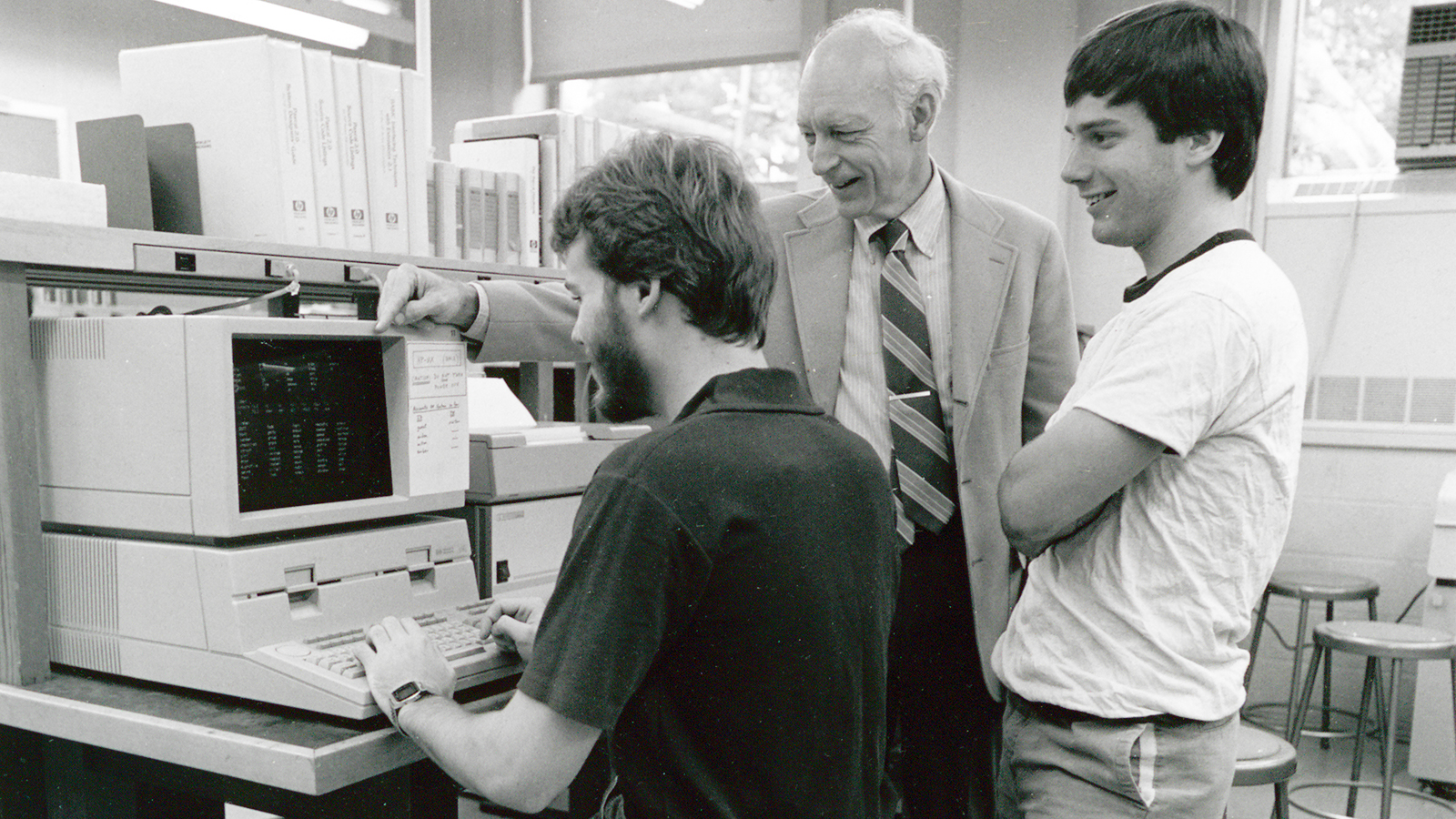by the Office of Engineering Communications
 Bruce Arden developed foundational computer programming techniques that popularized computing in later decades. He led Princeton from the mainframe era to the personal computer era and was instrumental in creating the computer science department. He died Dec. 8, 2021, at 94. The above ran in the April 10, 1985, issue of the Princeton Alumni Weekly. Photo by Robert P. Matthews.
Bruce Arden developed foundational computer programming techniques that popularized computing in later decades. He led Princeton from the mainframe era to the personal computer era and was instrumental in creating the computer science department. He died Dec. 8, 2021, at 94. The above ran in the April 10, 1985, issue of the Princeton Alumni Weekly. Photo by Robert P. Matthews.
Bruce Arden, a computer-programming pioneer who helped usher computers into widespread use, has died. He was 94.
Arden joined the Princeton faculty in 1973 and, as a department chair, played a key role in establishing Princeton’s Department of Computer Science. One of his students, former Google CEO Eric Schmidt, called Arden “one of the founders of computer science,” according to a report in the Wall Street Journal.
Arden’s career began in the U.S. Navy, where he learned electronics as a radar technician from 1944 to 1946. With support from the GI Bill, he earned a bachelor’s degree in electrical engineering from Purdue University. He joined the University of Michigan as a researcher, where he developed foundational programming techniques that made computers a common tool on college campuses. While on the job, in 1965, he completed a Ph.D. in electrical engineering.
Arden wrote in his memoirs that his “efforts were mainly to make programming more available to nonspecialists.” By all accounts, he succeeded.
In 1957, he helped develop the Generalized Algebraic Translator (GAT), a compiler for the IBM 650 that made programming much easier and broadened the use of computing for research and teaching applications at Michigan. He then helped develop the Michigan Algorithm Decoder, GAT’s successor, which was adopted by such organizations as the Ford Motor Company and the Massachusetts Institute of Technology. He served on the Michigan faculty from 1965 to 1973 and wrote one of the first textbooks on digital computing. During this time, he also collaborated with IBM to develop a multiprocessor system, known as the Michigan Time-Sharing System (MTS), that extended the mainframe to a set of individual terminals and pointed the way from the punch-card era toward the rise of the personal computer.
Arden moved to Princeton in 1973 and became professor and chair of the Department of Electrical Engineering. Over the next 12 years, he led a major growth period for computing at Princeton, including a four-fold increase in undergraduate concentrators. Under his leadership, the department changed its name in 1976 to electrical engineering and computer science and then split to create the stand-alone Department of Computer Science in 1985.
“[He] helped in many ways to make the department one of the top in the world,” said computer scientist Richard Lipton, the Associate Dean of Research at the Georgia Institute of Technology, who taught at Princeton from 1980 to 2000.
In 1986, Arden left to become the dean of engineering at the University of Rochester.
Professor Arden died in Livonia, Mich. on Dec. 8, 2021.
Those who knew Arden while he was at Princeton described him as a soft-spoken gentleman, generous with his students but ferocious on the squash court. At the time he retired, at age 67, he still commuted to work by bicycle, 15 miles roundtrip.